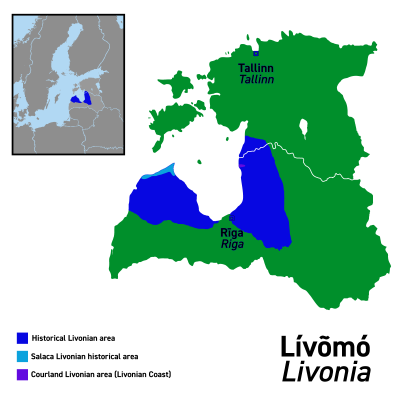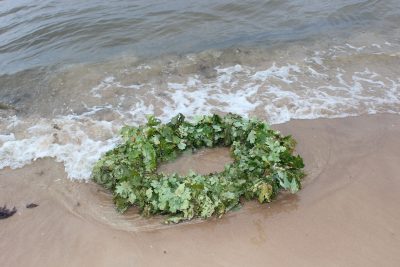
|

|
 Livonian culture is indigenous to Latvia and south-western Estonia. One of Europe’s most fragile minority groups, its language is critically endangered, spoken fluently by fewer than 20 people. Although historically inhabiting large parts of of modern Latvia and Estonia, by the mid-nineteenth century Livonians remained in two isolated areas either side of the Riga Gulf: Salaca Livonians across the Latvian-Estonian border; and Courland Livonians on the Courland peninsula (the “Livonian Coast”), where they remained until they were exiled following the two world wars and Soviet occupation.
Livonian culture is indigenous to Latvia and south-western Estonia. One of Europe’s most fragile minority groups, its language is critically endangered, spoken fluently by fewer than 20 people. Although historically inhabiting large parts of of modern Latvia and Estonia, by the mid-nineteenth century Livonians remained in two isolated areas either side of the Riga Gulf: Salaca Livonians across the Latvian-Estonian border; and Courland Livonians on the Courland peninsula (the “Livonian Coast”), where they remained until they were exiled following the two world wars and Soviet occupation.
Only a minority of residents of the Courland Livonian area, with its nature reserves and beach resorts for leisure tourism, have Livonian roots; most are holiday-home owners. Nevertheless, over the last two decades Livonian heritage – its flag, signage, food – has become more common, including amongst the in-migrant population; and the Livonian community in exile retains links with its historical area through cultural events. But the visibility of Livonian heritage remains poor, largely absent from existing information or tourism products.
Most Livonians in the Salaca Livonian area had been assimilated into the Latvian or Estonian majority by the mid-nineteenth century. But Livonian heritage left traces on the cultural landscape, in the Livonian-like dialect of Latvian, offering-caves, hillforts, and place names. The resurgence of interest in Livonian heritage is noticeable here, too. It is increasingly visible in the physical landscape; Livonian ancestry gatherings have begun; in linguistic, folkloric, and archaeological research and exhibitions; and in poetry and music.
 This renewed interest stems from the Livonian Cultural Space’s 2018 inclusion on Latvia’s national list of ICH, furthered by plans to apply for inscription on UNESCO’s list of critically endangered ICH. The belief that Livonians became extinct in the thirteenth century dominated until the 2000s, leading to misconceptions about Livonian heritage, even amongst tourism officials. This leads to misalignment, such as infrastructure that is “Livonian” on paper, but has little to no connection with Livonian heritage.
This renewed interest stems from the Livonian Cultural Space’s 2018 inclusion on Latvia’s national list of ICH, furthered by plans to apply for inscription on UNESCO’s list of critically endangered ICH. The belief that Livonians became extinct in the thirteenth century dominated until the 2000s, leading to misconceptions about Livonian heritage, even amongst tourism officials. This leads to misalignment, such as infrastructure that is “Livonian” on paper, but has little to no connection with Livonian heritage.
Our case study events celebrate Livonian culture in all its diversity: the annual Livonian Festival in Mazirbe, Latvia (connected with an annual summer camp for Livonian youth); the cross-border North Livonia festival (Ainaži, Latvia); Ventspils culture days (Ventspils, Latvia), that make visible the heritage and modern culture of Livonians.